|
|
|
|
| 1. |
Place the Software
Installation Disc for the Windows platform into the disc drive. After a
few seconds, the installation program is launched.
If the installation program does not launch automatically:
- Click the Start button on the Windows task bar, and then click Run.
- Browse to the installation disc drive, select Setup.exe, click Open, then click OK.
NOTES
- If you are installing on Windows Server Core editions, mount to Software
Installation Disc through command line, go to the AMD64 folder and run
Setup.exe.
|
| 2. |
Choose the language you want to use during installation.
Click the down arrow and select the desired language from the drop-down list, and click Next to continue.
|
 |
| 3. |
Select the option to install software on this computer. NOTES
- The options that appear on this screen depend on the computer in which
the software is being installed.
|
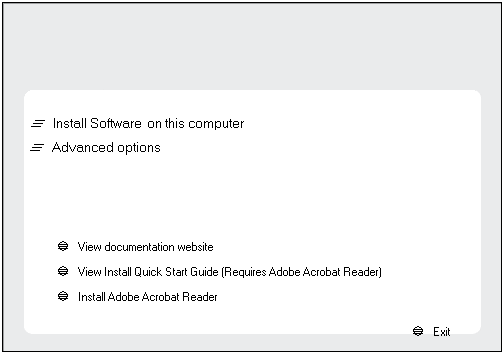 |
| 4. |
Read the license agreement, then select I accept the terms
in the license agreement. Click Next to continue.
|
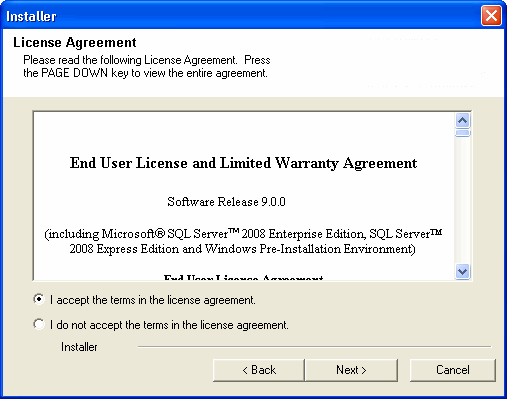 |
|
If you are installing in clustered environment, follow the steps below.
For non-clustered environment, skip to
Select Components for Installation.
|
| 5. |
Select Configure a Virtual Server. Click Next to continue.
|
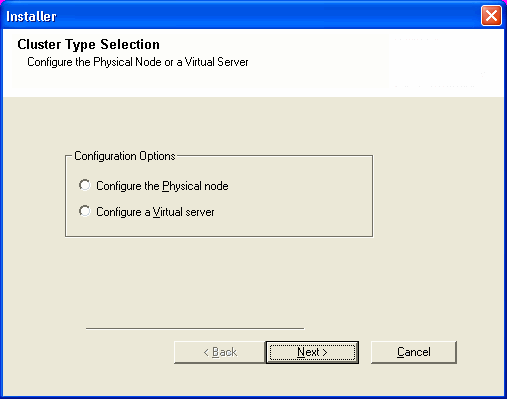 |
| 6. |
Select the disk group in which the cluster group resides. Click Next to
continue.
|
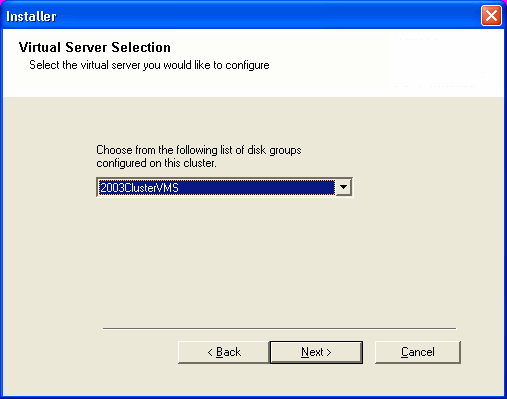 |
|
|
| 7. |
Select the component(s) to install. NOTES
- Your screen may look different from the example shown.
- Components that either have already been installed, or which cannot be installed, will be dimmed.
Hover over the component for additional details.
- If you wish to install the agent software for restore only, select
Install Agents for Restore Only checkbox. See
Installing Restore Only Agents for
more information.
- The Special Registry Keys In Use field will be highlighted when GalaxyInstallerFlags
registry key is enabled. Move the mouse pointer over this field to
see a list of registry keys that have been created in this computer.
Click Next to continue.
To install the CommNet Browser, from the Common
Technology Engine folder expand the CommCell
Console folder, and then select the following:
When you select this option, the Java Runtime Environment is automatically
selected for install.
|
 |
| 8. |
Click Yes to install the Java Runtime Environment
(JRE) or click No if you would like to use the JRE Version already
available in your computer.
NOTES
- This prompt will be displayed only if the computer is running a
JRE version prior to the one supplied in this installation program or
no JRE version is available at all.
|
 |
| 9. |
Select Add programs to the Windows Firewall Exclusion List, if
you wish to add CommCell programs and services to the Windows Firewall
Exclusion List.
NOTES:
Click Next to continue.
|
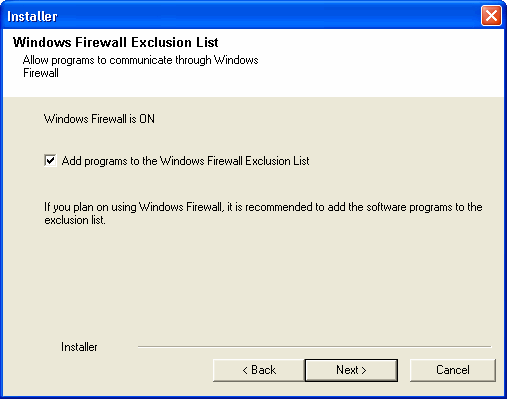 |
| 10. |
Specify the location where you want to install the software. NOTES
- Do not install the software to a mapped network drive.
- Do not use the following characters when specifying the destination path:
/ : * ? " < > | #
It is recommended that you use alphanumeric characters only.
- If you intend to install other components on this computer, the selected installation directory will be automatically used for that software as well.
- If a component is already installed in this computer, this screen may not be displayed.
The software will be automatically installed in the same location that was
previously specified.
Click Browse to change directories.
Click Next to continue.
|
 |
|
|
| 11. |
Specify the CommNet Server Interface Name. CommNet
Server Interface Name - The TCP/IP network interface name of the CommNet
Server computer.
Select or Enter the information and click Next to continue.
|
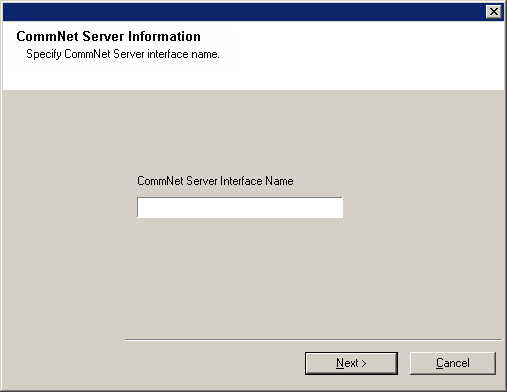 |
|
|
| 12. |
If the Internet Information Server (IIS) is installed on
this computer, the install program asks if you want to configure the software
for web-based administration. Click Yes to continue.
NOTES
- If IIS is not installed then you will not receive this prompt.
- The screen to the right may look different depending upon the software
selected for install or upgrade.
|
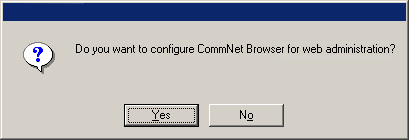 |
| 13. |
When prompted for an alias, type the name (or use the default)
of the Web alias that you want to use for accessing the CommNet Browser
remotely. Click Next to continue.
NOTES
- If IIS is not installed then you will not receive this prompt.
|
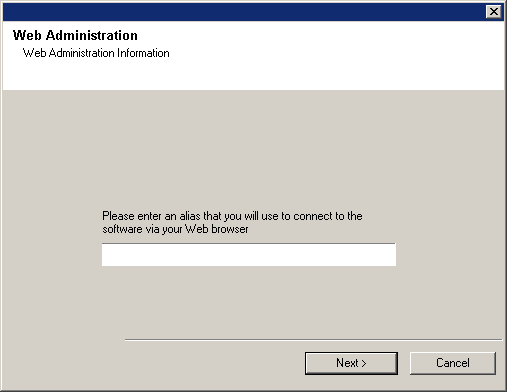 |
|
|
| 14. |
Verify the summary of selected options.
NOTES
- The Summary on your screen should
reflect the components you selected for install, and may look different from
the example shown.
Click Next to continue or
Back to change any of the options.
The install program now starts copying the software to the computer.
This step may take several minutes to complete.
|
 |
|
If you are installing in clustered environment, follow the steps below
to install on remaining nodes of the cluster. For non-clustered environment,
skip to Setup Complete.
|
| 15. |
To install/upgrade the software on the remaining nodes of the cluster, click Yes.
To complete the install for this node only, click No.
|
 |
| 16. |
Select cluster nodes from the Preferred Nodes list and click the arrow
button to move them to the Selected Nodes list.
NOTES
- The list of Preferred Nodes displays all the nodes found in the
cluster; from this list you should only select cluster nodes configured to
host this cluster group server.
- Do not select nodes that already have multiple instances installed. For
more information, see
Multi Instancing.
When you have completed
your selections, click Next to continue.
|
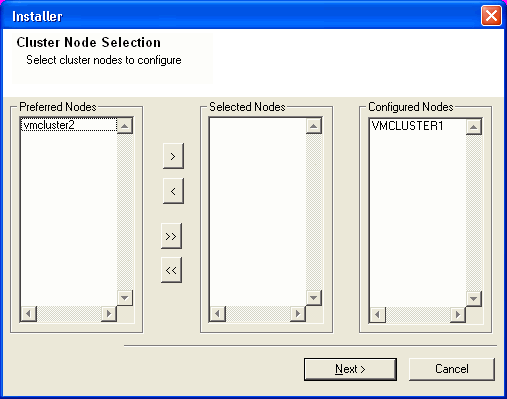 |
| 17. |
Type the User Name and Password for the Domain Administrator
account, so that the installer can perform the remote install/upgrade of the cluster
nodes you selected in the previous step.
Click Next to continue.
|
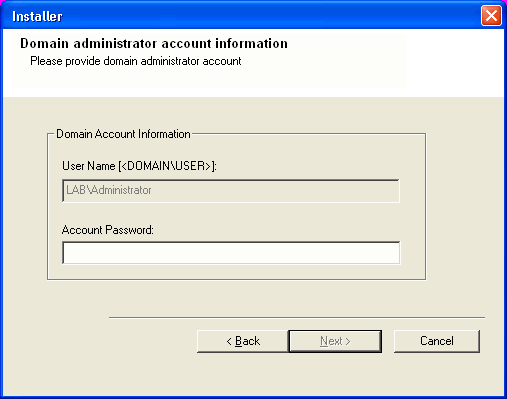 |
| 18. |
The progress of the remote install for the cluster nodes is displayed; the
install can be
interrupted if necessary.
Click Stop to prevent installation to any nodes after the current ones
complete.
Click Advanced Settings to specify any of the following:
- Maximum number of nodes on which Setup can run simultaneously.
- Time allocated for Setup to begin executing on each node, after which the
install attempt will fail.
- Time allocated for Setup to complete on each node, after which the install
attempt will fail.
NOTES
- If, during the remote install of a cluster node, setup fails to complete or is interrupted, you
must perform a local install on that node. When
you do, the install begins from where it left off, or from the beginning
if necessary. For procedures, see
Manually Installing
the Software on a Passive Node.
|
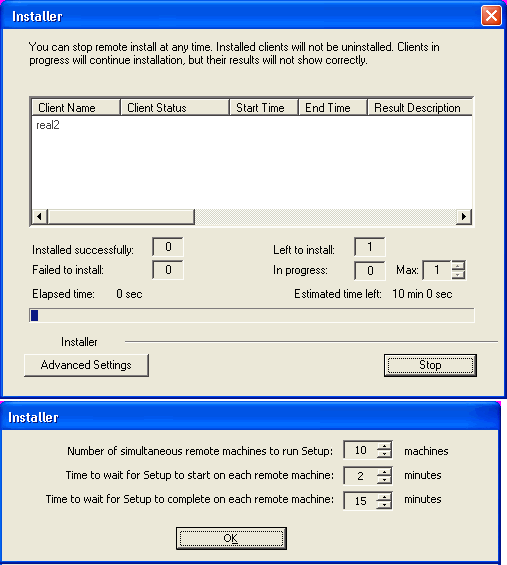 |
| 19. |
Read the summary for remote installation to verify that all selected nodes were installed
successfully.
NOTES
- If any node installation fails, you must manually install the software on that node once the
current installation is complete. (See
Manually Installing the
Software on a Passive Node for step-by-step instructions.)
- The message displayed on
your screen will reflect the status of the selected nodes, and may look different
from the example.
Click Next to continue.
|
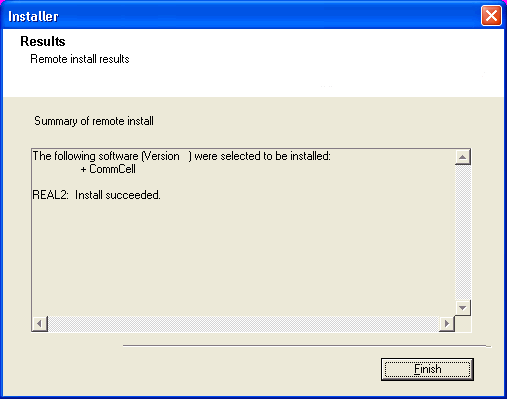 |
|
|
| 20. |
Setup displays the successfully installed components.
NOTES
- The Setup Complete message displayed on your screen will
reflect the components you installed, and may look different from the
example shown.
- If Reboot Now button is displayed make sure to reboot the
computer before performing any other operations from the computer.
Click Finish to close the install program.
The installation is now complete.
|
 |
|
|
General
- Install post-release updates or Service Packs that may have been released
after the release of the software. Alternatively, you can enable
Automatic Updates for quick
and easy installation of updates in the CommNet Browser.
|


















